Riello iDialog Handleiding
Bekijk gratis de handleiding van Riello iDialog (2 pagina’s), behorend tot de categorie UPS. Deze gids werd als nuttig beoordeeld door 86 mensen en kreeg gemiddeld 4.9 sterren uit 43.5 reviews. Heb je een vraag over Riello iDialog of wil je andere gebruikers van dit product iets vragen? Stel een vraag
Pagina 1/2

Wir danken Ihnen, dass sie unser Produkt gewählt haben!
WICHTIGE SICHERHEITSHINWEISE
Nach vorheriger AUFMERKSAMER UND SORGFÄLTIGER LEKTÜRE DER VORLIEGENDEN
BEDIENUNGSANLEITUNG kann dieses Gerät durch jede Person installiert werden.
Diese Bedienungsanleitung enthält detaillierte Anweisungen zur Bedienung und Installation der USV.
Für Informationen zur Bedienung, und um mit Ihrem Gerät die besten Leistungen zu erzielen, muss
diese Bedienungsanleitung sorgfältig in der Nähe der USV aufbewahrt und VOR ARBEITEN AN
DER USV ZU RATE GEZOGEN WERDEN.
© Vorbehaltlich der Genehmigung durch die Herstellerfirma, ist die Wiedergabe jedweden Teils, auch
auszugsweise, der vorliegenden Bedienungsanleitung verboten. Für Verbesserungen behält sich der
Hersteller das Recht vor, das beschriebene Produkt jederzeit und ohne Vorankündigung abzuändern.
Achtung:
Die folgenden Anleitungen sorgfältig lesen und diese Bedienungsanleitung zum schnellen
Nachschlagen aufbewahren.
Der Netzanschluss der USV muss an einen Anschluss mit Erdung angeschlossen werden.
Auch bei ausgeschalteter USV gibt es im Gerät potentiell gefährliche Spannungen. Alle
Reparaturarbeiten dürfen ausschließlich von autorisiertem Personal ausgeführt werden.
Auch wenn die USV nicht am Netz angeschlossen ist, können die Ausgänge unter Spannung stehen.
Bei einem Netzausfall (USV-Batteriebetrieb) das Speisekabel nicht trennen, um die Erdung der
angeschlossenen Abnehmer sicherzustellen.
Vermeiden, dass Flüssigkeiten bzw. Fremdkörper in die USV gelangen.
Da das Speisekabel als Trennvorrichtung angesehen wird, muss der USV-Anschluss bzw. die
Rückseite der USV zugänglich und leicht trennbar sein.
Bei Gefahr bzw. beim Trennen der USV von den Energiequellen, Stromnetz und Batterien, das
Speisekabel vom Netzstecker oder an der Rückseite der USV trennen und die USV mit dem Schalter
STAND-BY/ON (1) abschalten.
Stromschlaggefahr. Auch nachdem das Gerät vom Netz getrennt worden ist, stehen Bauteile in der
USV unter Spannung, weil sie an die Batterien angeschlossen sind, und sind daher gefährlich. Vor
allen Reparatur- und Wartungsarbeiten die Batterien trennen und prüfen, dass keine Spannung anliegt.
Die USV erzeugt einen Fehlerstrom. Sicherstellen, dass die Summe der Fehlerströme der USV und der
an ihr angeschlossenen Lasten in Richtung Erde kleiner als der Grenzwert von 3,5mA ist.
Ausgewechselte Batterien sind SONDERMÜLL und müssen entsprechend entsorgt werden.
Batterien nicht ins Feuer werfen.
Nicht versuchen die Batterie zu öffnen: Es sind wartungsfreie Batterien. Außerdem ist das Elektrolyt
gefährlich für Haut und Augen und kann giftig sein.
Die Batterien können Stromschläge verursachen und haben einen hohen Kurzschlussstrom. Beim
Umgang mit Batterien die nachstehenden Vorsichts- und Schutzmaßnahmen treffen:
- Keine Uhren, Ringe, Ketten oder andere Metallmaterialien tragen.
- Nur Werkzeuge mit isoliertem Griff benutzen.
Die USV entsprechend der in der Bedienungsanleitung vorgesehenen Spezifikationen und Anleitungen
verwenden.
UMWELTSCHUTZ
Bei der Entwicklung seiner Produkte stellt das Unternehmen umfangreiche Ressourcen zur
Umweltanalyse bereit.
Alle unsere Produkte folgen den Zielen, die in der Umweltverwaltungspolitik in Übereinstimmung mit
den geltenden Vorschriften festgelegt sind.
In diesem Produkt sind keine gefährlichen Substanzen wie CFC, HCFC oder Asbest enthalten.
Bei der Wahl der Verpackung wurde vornehmlich ein recyclebares Material gewählt.
Für eine richtige Entsorgung, sind Sie gebeten, die Materialart der Verpackung an Hand der
untenstehenden Tabelle zu ermitteln und auszusortieren. Entsorgen Sie jedes Material gemäß den
geltenden Vorschriften des Landes, in dem das Produkt genutzt wird.
Beschreibung
MATERIAL
Schachtel
Karton
Eckenschutz
Geschäumtes Polysterol
Schützhüllen und Zubehörhüllen
Polyethylen
Entsorgung des Produktes
Das USV enthält in seinem Innern Platinen und Batterien, die als Giftmüll und gefährlich eingestuft
werden. Am Gebrauchsende des Produktes ist es nach den örtlichen Rechtsvorgaben zu behandeln.
Die sachgerechte Entsorgung trägt zur Achtung der Umweltwelt und zur Gesundheit der Menschen
bei.
BESCHREIBUNG DER USV
Ansichten der Vorder- und Rückseite
1. Hauptschalter STAND-BY/ON
2. /LED GRÜN: USV eingeschaltet mit Netzbetrieb
3. /LED GELB: USV in Batteriebetrieb
4. /LED ROT: Unterschiedliche Anzeigen (siehe Tabelle "Alarme und Anzeigen")
5. Eingangsstecker Datenbus IEC
6. Eingangs-Sicherung
7. IEC Backup-Steckdosen
8. Steckdosen mit Überspannungsschutz (für Größenordnungen 1200 VA und 1600 VA)
9. USB-Anschluss
10. Serielle Schnittstelle RS232 (nur für Größenordnungen 1200 VA und 1600 VA)
INSTALLATION
Öffnen der Verpackung und Kontrolle des Inhalts
Die USV aus der Verpackung nehmen und auf sichtbare Transportschäden überprüfen. Werden
Schäden festgestellt, die USV wieder einpacken und bei der Verkaufsstelle zurückgeben.
Verpackungsinhalt
USV
2 Speisekabel IEC 10 A
Bedienungsanleitung
Garantieschein
Aufstellung
Für die Installation und das Aufstellen der USV folgende Anweisungen befolgen:
Die USV muss auf einer waagerechten Fläche aufgestellt werden.
Die USV darf nicht direkter Sonneneinstrahlung ausgesetzt werden.
Sicherstellen, dass die Raumtemperatur zwischen 0°C und 40°C liegt. Für einen optimalen
Betrieb sollte die maximale Raumtemperatur 25°C betragen.
Die Raum-Luftfeuchtigkeit muss unter 90% liegen.
Staubige Räume vermeiden.
Um eine ausreichende Lüftung sicherzustellen, muss die USV in einem Abstand von mindestens
5 cm von den umliegenden Wänden aufgestellt werden.
Sicherstellen, dass weder die USV noch andere schwere Gegenstände das Speisekabel
quetschen.
Das Kabel, mit dem die Lasten an die USV angeschlossen werden, darf nicht länger als 10
Meter sein.
Lagerung
Ist eine längere Lagerung vorgesehen, muss die USV vollständig aufgeladen werden. Um einen guten
Batterie-Zustand zu erhalten, muss alle 6 Monate ein vollständiger Entlade-/ Ladezyklus
vorgenommen werden.
FUNKTION
Anschluss an das Netz und Laden der Batterien
Prüfen, dass die der USV vorgeschaltete Anlage gegen Überstrom geschützt ist. Der empfohlene
Schutzwert beträgt 10A.
Verbinden Sie das USV über das Versorgungskabel Ihres Computers, das Sie in die
Eingangsbuchse des IEC-Eingangs stecken, mit dem Stromnetz (5).
Die USV lädt die Batterien jedes Mal, wenn sie an das Stromnetz angeschlossen wird (auch
wenn die USV ausgeschaltet ist). Die USV für 6 8 Stunden laden, bevor Lasten angeschlossen –
werden.
Anschließen der Lasten
Nach dem Aufladen des UPS können die verschiedenen Lasten (wie z.B. Computer, Monitor, etc. …)
unter Beachtung der nachstehenden Hinweise an die Ausgangssteckdosen angeschlossen werden
(Benutzen Sie die mitgelieferten Kabel):
Backup-Steckdosen(7): Diese Steckdosen sind nur bei eingeschaltetem UPS spannungsversorgt.
Bei Netzausfällen werden die Backup-Steckdosen batteriegespeist.
Hinweis: Es wird empfohlen, keine Laserdrucker bzw. Laserdruckvorrichtungen an die
Backup-Steckdosen (7) gemeinsam mit anderen Peripheriegeräten des Computers
anzuschließen. Derartige Geräte haben im Vergleich zur Ruhestellung normalerweise einen
höheren Energieverbrauch. Bei solchen Konfigurationen kann es zu einer Überlast des UPS und
dementsprechend zum Ausfall aller angeschlossenen Geräte kommen.
Surge Steckdosen (8): Zusätzliche Filtersteckdosen, die Überspannung und Netzstörungen
senken; sie bieten keinen Schutz gegen die Folgen von Netzausfall oder kurze
Versorgungsunterbrechungen. Sie können zur Versorgung von nicht grundlegenden
Vorrichtungen wie z.B. Drucker, Scanner, usw. verwendet werden. Derartige Steckdosen eignen
sich zum Anschluss kleiner Laserdruckgeräte.
Hinweis: Die Steckdosen sehen auch spannungsversorgt, wenn das UPS auf Standby steht.
Einschalten/ Ausschalten
Zum Einschalten der USV und zur Stromversorgung der Lasten den Hauptschalter STAND-BY/ON
drücken.
Zum Ausschalten der USV und zum Trennen der Stromversorgung der Lasten erneut den
Hauptschalter drücken.
Batteriestart (Kaltstart)
Wird der Hautschalter bei ausgeschalteter USV bei einem Stromausfall gedrückt, wird sie in
Batteriebetrieb eingeschaltet.
Achtung: Bei einem Batteriestart ist die Ausgangsfrequenz auf 50Hz eingestellt.
USB-Anschluss
Die USV kann mit einem USB-Verbindungskabel für die Überwachung und das Runterfahren des
Betriebssystems an einen Computer angeschlossen werden. Die entsprechende Steuersoftware und die
zugehörige Bedienungsanleitung stehen auf der Internetseite www.riello-ups.com zum Download zur
Verfügung.
Serielle Schnittstelle RS232 (nur für die Ausführungen 1200-1600VA)
Die serielle Schnittstelle RS232 ermöglicht über ein serielles pin- -pin Kabel mit einer Maximallänge to
von 3 Metern die Verbindung des USVs an einen PC (Schnittstelle COM), um die gleichen
Überwachungsfunktionen und den shutdown des Ports USB vorzunehmen.
ALARME UND ANZEIGEN
Beschreibung
Schalter-
Position
(1)
Funktion Led
Andere Anzeigen
Grün led
Gelb led
Rot led
Stand-by
STAND- BY
Blinkt
Netzbetrieb
ON
Dauernd
eingeschaltet
Batteriebetrieb
ON
Blinkt
Akustisches Signal langsam
aussetzend
Voralarm
Entladungsende
ON
Blinkt
Aussetzendes akustisches
Signal
Überlast
ON
Blinkt
Aussetzendes akustisches
Signal
Batterie defekt
ON
Dauernd
eingeschaltet
Dauernd
eingeschaltet
Aussetzend akustisches
Signal
(10 Sekunden)
Alarm oder
Schutzabschaltung
(nicht durch
Überlast)
ON
Dauernd
eingeschaltet
Anhaltendes akustisches
Signal
FEHLERSUCHE UND BEHEBUNG
PROBLEM
MÖGLICHE
URSACHE
VERFAHREN
Die USV schaltet sich
nicht ein
Die USV ist
ausgeschaltet
Prüfen, ob der Schalter STAND-BY/ON auf Position
ON gestellt ist.
Der Sicherung am USV-
Eingang ist ausgelöst
worden.
Alle unwichtigen Geräte von der USV trennen.
Die Sicherung (6) rücksetzen. Dazu die Taste solange
drücken, bis sie einrastet. Die USV einschalten und
die Geräte nach und nach einzeln wieder anschließen
Wird die Sicherung erneut ausgelöst, ist
wahrscheinlich eines der angeschlossenen Geräte die
Ursache für die Überlast.
Die USV arbeitet in
Batteriebetrieb, obwohl
das Stromnetz zur
Verfügung steht.
Der Sicherung am USV-
Eingang ist ausgelöst
worden.
Alle unwichtigen Geräte von der USV trennen. Die
Sicherung (6) rücksetzen. Dazu die Taste solange
drücken, bis sie einrastet.
Die Steckdose, an die
die USV angeschlossen
ist, liefert keine
Stromversorgung zum
Gerät.
Die USV an eine andere Steckdose anschließen oder
das Stromnetz von einem Fachelektriker überprüfen
lassen.
Bei einer Störung am
Stromnetz arbeitet die
USV nicht solange wie
vorgesehen.
Die USV-Batterie ist
nicht ausreichend
geladen, da sie nach
einem Netzausfall nicht
ausreichend Zeit hatte
sich aufzuladen.
Abwarten, dass sich die Batterie entlädt. Die Batterie
wird jedes Mal geladen, wenn die USV an eine
Steckdose angeschlossen wird. Allgemein werden 8
Stunden für ein vollständiges Aufladen der Batterie
benötigt. Die Betriebsdauer der USV ist
eingeschränkt, solange die Batterie nicht vollständig
geladen ist.
Die Batterie muss
gewechselt werden.
Batterien zu ersetzen. Bitte Kundendienst kontakt
nehmen.
Das rote LED (4) blinkt.
Das USV ist überladen.
Trennen Sie die nicht wichtigen Geräte von den
Backup-Buchsen ab, wie beispielsweise Drucker, und
verbinden Sie sie an eine getrennte
Stromversorgungssteckdose.
Das rote LED (4) bleibt
konstant rot und es
ertönt das
Akustiksignal.
Die USV hat eine
Störung erfasst.
Die Geräte von der USV trennen. Die USV
ausschalten und die Stromversorgung trennen. Die
Stromversorgung wieder herstellen und die USV
wieder einschalten. Tritt die Anzeige erneut auf,
wenden Sie sich bitte an Ihren Kundendienst.
Die Anzeige
Batteriestörung schaltet
sich ein.
Batterie defekt.
Die Batterie wechseln.
Die USV kommuniziert
nicht mit dem PC.
Die Software sendet ein
Kommunikationssignal,
das nicht ankommt.
Überprüfen Sie, dass das USB- oder das serielle
Kabel (für Modelle mit serieller Schnittstelle) mit
dem USV und mit dem PC verbunden ist und dass in
der Software zur Verbindungsherstellung der richtige
Port eingestellt ist.
Die Software ist nicht
installiert.
Die für das Betriebssystem Ihres Computers
spezifische Software installieren.
TECHNISCHE DATEN
MODELL
400VA
600VA
800VA
1200VA
1600VA
EINGANG
Spannung
230Vac
Frequenz
50 oder 60Hz +/-5% (mit Selbsterlernung)
AUSGANG
Spannung (bei
Batteriebetrieb)
230Vac +/-10% (Pseudo-sinusförmige Welle)
Frequenz (bei
Batteriebetrieb)
50 oder 60Hz +/-1Hz (mit Selbsterlernung)
Auslösezeit
Typisch 2 6 mSek –
Nennleistung VA
400
600
800
1200
1600
Nennleistung W
240
360
480
720
960
SURGE
STECKDOSEN
Max. Strom
-
-
-
10A
10A
SCHUTZ UND
FILTER
Schutz gegen Überlast
und Kurzschluss
Bei Netzbetrieb: Sicherung am Eingang gegen Überlast.
Bei Netzbetrieb: Automatisches Abschalten nach 5 Minuten
mit Last von >110%. Sofortiges Abschalten bei Last von
>120% oder Kurzschluss.
Bei Batteriebetrieb: Automatisches Abschalten nach 5
Sekunden bei Überlast von >110%. Sofortiges Abschalten bei
Überlast von >120% oder Kurzschluss.
BATTERIE
Typ
Wartungsfreie Bleibatterie
Typische Ladedauer
6-8 Std.
Sicherungen
Schutz gegen Tiefenentladung und Anzeige Batteriewechsel.
UMGEBUNGSBEDIN
GUNGEN
Arbeitsbedingungen
Max. Höhe 1000m, 0-90% Feuchtigkeit ohne
Kondenswasser, 0-40°C
VERSCHIEDENES
Geräuschentwicklung
<40dB (im Abstand von 1 m von der Quelle)
Erd-Verluststrom
<1mA

Thank you for choosing our product.
IMPORTANT SAFETY NOTES
This device can be installed by anyone, provided that they READ THIS MANUAL CAREFULLY
AND FOLLOW THE INSTRUCTIONS WITHIN IT.
This manual contains detailed instructions for the use and installation of the UPS.
This manual should be kept close to the UPS and READ BEFORE THE UPS IS INSTALLED AND
USED
© No part of this manual may be reproduced, even partially, without the manufac sation. turer’s authori
For purposes of improvements the manufacturer reserves the right to change specifications at any time
and without notice.
Warning:
Read the following instructions carefully and keep this manual handy for easy referral.
The mains power supply socket used to power the UPS must have an earth connection.
Potentially dangerous electrical voltages are generated inside this device, even when the UPS is
switched off. All repairs must be carried out by authorised personnel only.
Voltage may be present on the UPS output sockets even when the UPS is not connected to a mains
power supply.
In the event of a mains power supply failure (emergency UPS operation), do not unplug the power
supply cable to the UPS, to ensure earth continuity to the connected loads.
Do not allow liquids and/or other foreign bodies to enter the UPS.
Since the mains power supply cable acts as a separation device, the mains power supply socket used
that connects to the rear of the UPS must be accessible and easy to disconnect.
In dangerous conditions and/or to disconnect the UPS from sources of energy, (whether mains or
batteries), disconnect the power supply cable from the mains socket or from the back of the UPS and
shut down the UPS using the STAND-BY/ON switch (1).
Risk of electric shock. Since internal components are connected to the batteries, they will remain
powered, and therefore dangerous, even after the device has been disconnected from a mains power
supply. Disconnect the batteries and ensure no voltage is present before carrying out any repair or
maintenance operations.
The UPS generates an earth leakage current. Ensure that the sum of the UPS and load earth leakage
current is less than 3.5mA.
Replaced batteries should be considered as TOXIC WASTE and treated as such.
Do not throw the batteries into fire. a
Do not try to open the batteries: they do not require any maintenance. Furthermore the electrolyte is
dangerous if it comes into contact with skin or eyes and may be toxic.
The batteries can cause electric shock and have a high short circuit current. Take the necessary safety
measures and precautions when handling them:
- do not wear watches, rings, necklaces or any other metallic material
- only use tools with insulated handles
Only use the UPS following the specific instructions in this user manual.
ENVIRONMENTAL PROTECTION
In developing its products, the company devotes substantial resources in the analysis of environmental
aspects.
All of our products pursue the objectives defined in the environmental management system policy
developed by the company and in accordance with current legislation.
No hazardous materials such as CFC’s, HCFC’s or asbestos are used in this product.
In the evaluation of the choice of packaging material, preference was made for recyclable materials.
For proper disposal, please separate and identify the type of material making up the package as per the
following table. Dispose of all materials according to the regulations prevailing in the country of use of
the product.
DESCRIPTION
MATERIALS
Box
Cardboard
Angular packaging
Expanded polystyrene
Protective bag and accessories bag
Polyethylene
Product’s disposal
The UPS contains circuit boards and batteries in its interior that are considered TOXIC WASTE and
DANGEROUS. At the end of the product’s life, deal with it in accordance with local existing laws.
Proper disposal helps respect for the environment and human health.
DESCRIPTION OF THE UPS
Front and rear views:
1. Main STAND-BY/ON switch
2. /GREEN LED: the UPS operates from the mains power supply
3. /YELLOW LED: the UPS operates battery on
4. Report Signals table /RED LED: various messages (see the “Alarms and ”)
5. IEC mains input plug
6. Input protection device
7. Back-up sockets (IEC type)
8. Surge sockets (only for sizes 1200 VA and 1600 VA)
9. USB port
10. RS232 Serial port (only for sizes 1200 VA and 1600 VA)
INSTALLATION
Opening of packing and verification of its contents
Remove the UPS from packaging and check that there is no visible damage caused during its
shipping. If there is any noticeable damage to the UPS, pack the product up and return to where
it was purchased.
Packing contents
UPS
2 IEC 10 A cables
User manual
Warranty card
Positioning
Follow the instructions below to correctly install and position the UPS:
The UPS must be placed on a horizontal surface.
The UPS must not be exposed to direct sunlight.
Ensure that the ambient temperature is between 0°C and 40°C, for optimal performance use at a
maximum temperature of 25°C.
The ambient humidity less than 90%. is
Avoid dusty environments.
Place the UPS at least 5cm from a wall to ensure adequate ventilation.
Ensure that the UPS or any other heavy objec is clear of the power supply cable. t
Ensure that the cables connecting loads to the UPS are not longer than 10metres.
Storage
The UPS must be fully recharged if it is to be stored for a long time. A full discharge and charge cycle
should be carried out every 6 months to keep the battery in good condition.
OPERATION
Connection to mains and battery charging
Please ensure that the mains power supply to be used with this UPS has upstream protection rated at
either 10A.
Connect the UPS to the electrical mains through the power cable of your computer, inserting the
cable into the input plug IEC (5).
The UPS will recharge its battery each time it is connected to a mains power supply (even if it is
powered down). We recommend that the UPS is charged for 6-8 hours before connecting the
loads.
Connecting the loads
After having loaded the UPS, loads can be connected (e.g.: computer, monitor, etc.) to the output
sockets, according to the following indications (using the cables included in the pack):
Back-up sockets (7): these sockets are only powered when the UPS is on. Should mains power
fail, the back-up sockets are battery-powered.
N.B.: we recommend not running laser printers or laser print devices from back-up sockets (7)
together with other computer peripheral equipment. On odd occasions, this equipment uses a
greater quantity of energy than when at rest. This set-up may lead to UPS overload and cause all
equipment connected to be switched off.
Surge sockets (8): additional filtered sockets limiting line surge and mains disturbances. They
do not protect the load from power failures or short blackouts. They can be used to power
non-essential devices such as, for example, printers, scanners and suchlike. Small laser printer
devices can be installed on these sockets.
N.B.: the sockets are also powered when the UPS is in stand-by.
Starting up/Shutting down
Press the main STAND-BY/ON switch to start-up the UPS and power the loads.
Press the switch again to shut down the UPS and power down from the loads.
Starting up battery (Cold start)on
If there is no mains power supply present, pressing the main power switch will cause the UPS to start
up using its battery as a source of power.
Warning: when starting up battery, the output frequency is set to 50Hz.on
USB port
The UPS can be connected to a computer for remote monitoring and shutdown operations using a USB
cable. The UPS management software and related manual can be downloaded from www.riello-
ups.com.
RS232 serial port (only for the 1200-1600VA versions)
The RS232 serial interface allows connection of the UPS to a PC (COM interface) by means of a pin-
to-pin serial cable with a maximum length of 3 meters, for the same functions of monitoring and
shutdown, to the USB port.
Vi ringraziamo per la scelta del nostro prodotto!
NOTE IMPORTANTI PER LA SICUREZZA
Questa apparecchiatura può essere installata da qualsiasi persona, previa ATTENTA E SCRUPOLOSA
LETTURA DEL PRESENTE MANUALE.
Questo manuale contiene le istruzioni dettagliate per l’uso e l’installazione dell’UPS.
Per informazioni sull’utilizzo e per ottenere il massimo delle prestazioni dalla Vostra apparecchiatura,
il presente manuale dovrà essere conservato con cura vicino all’UPS e CONSULTATO PRIMA DI
OPERARE SULLO STESSO.
© E’ vietata la riproduzione di qualsiasi parte del presente manuale anche se parziale salvo
autorizzazione della ditta costruttrice. Per scopi migliorativi, il costruttore si riserva la facoltà di
modificare il prodotto descritto in qualsiasi momento e senza preavviso.
Attenzione:
Leggere con cura le seguenti istruzioni e tenere a disposizione questo manuale per una rapida
consultazione.
La presa di rete cui l’UPS è collegato deve essere dotata di connessione di terra.
All’interno di questa apparecchiatura vi sono tensioni potenzialmente pericolose, anche con UPS
spento. Tutte le riparazioni dovranno essere effettuate esclusivamente da personale autorizzato.
Le prese di uscita dell’UPS potrebbero essere in tensione anche quando l’UPS non è collegato alla
rete.
In caso di mancanza di rete (funzionamento dell’UPS da batteria), non staccare il cavo di
alimentazione per garantire la continuità di terra all’utenza collegata.
Evitare che liquidi e/o altri corpi entrino nell’UPS.
Poiché il cavo di alimentazione separabile è inteso come dispositivo di sezionamento, la presa di rete
c ui l’UPS è collegato e/o il retro dell’UPS devono essere accessibili e facilmente scollegabili.
In condizioni di pericolo e/o per scollegare l’UPS dalle sorgenti di energia, rete e batterie, sconnettere
il cavo di alimentazione dalla presa di rete o dal retro dell’UPS e spegnere tramite l’interruttore
STAND-BY/ON (1).
Rischio di scossa elettrica. Anche dopo aver scollegato l’apparecchiatura dalla rete elettrica di
alimentazione, i componenti interni dell’UPS essendo collegati alle batterie, sono ancora in tensione,
quindi pericolosi. Prima di effettuare qualsiasi tipo di riparazione o manutenzione, scollegare le
batterie e verificare che non sia presente tensione.
L’UPS genera una corrente di dispersione. Assicurarsi che la somma della corrente di dispersione
verso terra dell’UPS e del carico connesso sia inferiore del limite di 3,5mA.
Le batterie sostituite vanno considerate RIFIUTO TOSSICO e trattate di conseguenza.
Non gettare le batterie sul fuoco.
Non tentare di aprire le batterie: sono prive di manutenzione. Il liquido elettrolita è pericoloso per la
pelle e per gli occhi, e può risultare tossico.
Le batterie possono essere causa di scossa elettrica e sono dotate di un alta corrente di cortocircuito.
Prendere le necessarie precauzioni e misure di sicurezza, di seguito elencate, quando si maneggiano
delle batterie:
- non indossare orologi, anelli, catenine o qualsiasi altro materiale metallico
- usare solo attrezzi con impugnatura isolata
Usare l’UPS seguendo le specifiche previste secondo quanto prescritto dal presente manuale d’uso.
TUTELA DELL’AMBIENTE
Nello sviluppo dei suoi prodotti l’azienda dedica ampie risorse nell’analisi degli aspetti ambientali.
Tutti i nostri prodotti perseguono gli obiettivi definiti nella politica del sistema di gestione ambientale
sviluppato dall’azienda in accordo con la normativa vigente.
In questo prodotto non sono utilizzati materiali pericolosi quali CFC, HCFC o amianto.
Nella valutazione degli imballi la scelta del materiale è stata fatta prediligendo materie riciclabili.
Per il corretto smaltimento si prega di separare e di identificare la tipologia di materiale costituente
l’imballo seguendo la tabella sottostante. Smaltire ogni materiale secondo le normative vigenti nel
paese di utilizzo del prodotto.
DESCRIZIONE
MATERIALE
Scatola
Cartone
Angolari imballo
Polistirene espanso
Sacchetto di protezione e sacchetto accessori
Polietilene
Smaltimento del prodotto
L’UPS contiene al suo interno schede elettroniche e batterie che sono considerate RIFIUTO TOSSICO
e PERICOLOSO. A fine vita del prodotto trattare secondo le legislazioni locali vigenti.
Il corretto smaltimento contribuisce a rispettare l’ambiente e la salute delle persone.
DESCRIZIONE DELL’UPS
Viste frontali e posteriori:
1. Interruttore principale STAND-BY/ON
2. /LED VERDE: UPS acceso con rete presente
3. /LED GIALLO: UPS in funzionamento da batteria
4. /LED ROSSO: segnalazioni varie (vedi tabella “Allarmi e segnalazioni”)
5. Spina di ingresso rete IEC
6. Protezione di ingresso
7. Prese di backup tipo IEC
8. Prese Surge (solo per taglie 1200 VA e 1600 VA)
9. Porta USB
10. Porta seriale RS232 (solo per taglie 1200 VA e 1600 VA)
INSTALLAZIONE
Apertura dell’imballo e verifica del suo contenuto
Rimuovere l’UPS dall’imballo e verificare che non vi siano danni visibili causati durante il trasporto.
Qualora si notassero danni all’UPS reimballare il prodotto e restituire presso il centro di acquisto.
Contenuto dell’imballo
UPS
2 cavi di connessione IEC 10 A
Manuale d’uso
Cartolina Garanzia
Collocazione
Seguire le seguenti indicazioni per installare e posizionare correttamente l’UPS:
L’UPS deve essere posto su di un piano orizzontale
L’UPS non deve essere esposto alla luce diretta del sole
Assicurarsi che la temperatura dell’ambiente sia compresa tra 0°C e 40°C, per un funzionamento
ottimale utilizzare a una temperatura massima di 25°C.
Il tasso di umidità dell’ambiente deve essere inferiore al 90%
Evitare ambienti polverosi
Posizionare l’UPS almeno a 5 cm di distanza dai muri circostanti al fine di permettere
un’adeguata aerazione
Assicurarsi che ne l’UPS ne qualche altro oggetto pesante schiacci il cavo di alimentazione
Il cavo che connette i caric hi all’UPS non deve superare i 10 metri di lunghezza
Immagazzinamento
È necessario ricaricare completamente l’UPS se necessita di un lungo periodo di immagazzinamento.
Ogni 6 mesi effettuare un ciclo di scarica e carica completa per conservare in buono stato la batteria.
FUNZIONAMENTO
Collegamento alla rete e carica delle batterie
Verificare che nell’impianto a monte dell’UPS vi sia una protezione da sovracorrenti. Il valore della
protezione consigliata è di 10A.
Collegare l’UPS alla rete elettrica tramite il cavo di alimentazione del Vostro computer
inserendo il cavo nella spina di ingresso IEC (5).
L’UPS effettua la ricarica della batteria ogni qualvolta viene collegato all’alimentazione di rete
(anche se spento). Caricare per 6- i collegare i carichi. 8 ore l’UPS prima d
Connessione dei carichi
Dopo aver collegato e ricaricato l’UPS è possibile connettere i carichi (es: computer, monitor, ecc…)
alle prese presenti sull’UPS (usando i cavi forniti in dotazione).
Prese Backup (7): queste prese sono alimentate solo quando l’UPS è acceso. In caso di
mancanza rete le prese di backup sono alimentate tramite batteria.
Nota: si consiglia di non applicare stampanti laser o dispositivi di stampa a laser sulle prese di
backup (7) assieme ad altre periferiche del computer. Queste apparecchiature assorbono
occasionalmente una quantità maggiore di energia rispetto quando sono a riposo. Questa
configurazione potrebbe portare in sovraccarico l’UPS e allo spegnimento di tutte le
apparecchiature collegate.
Prese Surg (8e ): prese addizionali filtrate, limitano le sovratensioni e disturbi di rete; non
proteggono il carico dagli eventi di mancanza rete o brevi interruzioni. Possono essere
utilizzate per alimentare dispositivi non essenziali quali ad esempio stampanti, scanner o altro.
Su queste prese è possibile installare piccoli dispositivi di stampa a laser.
Nota: le prese sono alimentate anche quando l’UPS è in stand-by.
Accensione/Spegnimento
Premere l’interruttore principale STAND BY/ON per accendere l’UPS ed - alimentare i carichi.
Per spegnere l’UPS e togliere l’alimentazione ai carichi premere nuovamente l’interruttore principale.
Accensione da batteria (Cold start)
In caso di assenza di rete, premendo l’interruttore principale, l’UPS effettua l’accensione da batteria.
Attenzione: quando viene effettuata l’accensione da batteria la frequenza di uscita è impostata a
50Hz.
Porta USB
L’UPS può essere collegato tramite un cavo di collegamento USB ad un computer per funzioni di
monitoraggio e shutdown del sistema operativo. È possibile scaricare il software di gestione ed il
relativo manuale dal sito internet www.riello-ups.com.
Porta seriale RS232 (solo per versioni 1200-1600VA)
L’interfaccia seriale RS232 consente il collegamento dell’UPS ad un PC (interfaccia COM) per mezzo
di un cavo seriale pin- -pin con lunghezza massima di 3 metri, per le medesime funzioni di to
monitoraggio e shutdown, della porta USB.
ALARMS AND REPORT SIGNALS
Description
Switch
position
(1)
Led functioning
Other report signals
Green led
Yellow led
Red led
Stand-by
STAND- BY
Blinking
Operation on mains
power
ON
Steady
Operation on battery
ON
Blinking
Slow blinking acoustic
signal
End of discharge
warning
ON
Blinking
Blinking acoustic signal
Overload
ON
Blinking
Blinking acoustic signal
Battery fault
ON
Steady
Steady
Blinking acoustic signal
(10 seconds)
Alarm or fault (other
than overload)
ON
Steady
Continuous acoustic
signal
TROUBLESHOOTING
PROBLEM
POSSIBLE
CAUSE
PROCEDURE
The UPS does not switch
on
The UPS is switched
off
Check that the STAND- switch is in the ON BY/ON
position
The UPS input thermal
protection device has
been triggered
Disconnect non- essential equipment from the UPS.
Reset the protection (6) by depressing the button. If
the switch resets, start up the UPS and reconnect
the equipment one device at a time. If the
protection activates again, one of the connected
devices is causing an overload condition.
The UPS is working on
battery even though
mains power is available
The UPS input thermal
protection device has
been triggered
Disconnect non essential equipment from the UPS.
Reset the protection (6) by depressing the button.
The mains power supply
socket the UPS is
connected to is not
supplying power to the
device
Connect the UPS to another mains power supply
socket or have the mains supply checked by a
qualified electrician.
When there is a mains
power supply failure, the
UPS does not work for
the expected runtime
The UPS battery is not
sufficiently charged as
there was not enough
time for it to recharge
after a recent power
failure
Wait for the battery to recharge. It recharges each
time the UPS is connected to a mains socket. It
usually takes 8 hours for the battery to recharge
fully. UPS operation time is a function of how
charged the battery is.
The battery needs to be
replaced.
Battery needs replacement. Contact the Service.
The red LED (4) flashes.
The UPS is
overloaded.
Disconnect the backup outlet (7), the
nonessential equipment, such as the printer, and
connect to a separate power outlet.
The red LED (4) remains
fixed and the acoustic
signal is active
The UPS has a fault.
Remove the external devices from the UPS. Turn
off the UPS and disconnect it from the mains.
Connect the UPS to the mains and turn on again. If
the UPS message the anomaly again, contact your
authorized service centre.
Battery fault message.
Battery fault.
Replace the battery.
The UPS is not
communicating with a PC.
The software sends a
message that
communication has been
lost.
Check that the USB cable or the serial cable (for
the models provided with serial ports) is connected
to both the UPS and the PC and that the
communication configuration of the software
selected the correct communicarion port.
The software is not
installed
Install the specific software for your computer’s
operating system.
TECHNICAL DATA
MODEL
400VA
600VA
800VA
1200VA
1600VA
INPUT
Voltage
230Vac
Frequency
50 or 60Hz +/-5% (with auto-sensing)
OUTPUT
Voltage (from battery)
230Vac +/-10% -sinusoidal wave) (Pseudo
Frequency (from
battery)
50 or 60Hz +/-1Hz (with auto-sensing)
Trigger time
2-6 ms typical
Rated power VA
400
600
800
1200
1600
Rated power W
240
360
480
720
960
SURGE SOCKETS
Max. current
-
-
-
10A
10A
PROTECTION
DEVICES AND
FILTERS
Overload and
shortcircuit protection
From mains: overload input protection.
From mains: automatic shutdown after 5 minutes with load
>110% and immediate shutdown with load >120% or for
shortcir cuit.
From battery: automatic shutdown after 5 seconds with load
>110% and immediate shutdown with load >120% or for
shortcir cuit.
BATTERY
Type
Sealed lead batteries, maintenance- free
Typical recharge time
6-8 hours
Protection
Protection against total discharge, battery replacement
indicator
AMBIENT
CONDITIONS
Operating conditions
Max altitude 1000m, 0-90% non condensing humidity, 0-
40°C
VARIOUS
Noise
<40dB (at 1m from source)
Earth leakage current
<1 mA
ALLARMI E SEGNALAZIONI
Descrizione
Posizione
interruttore
(1)
Funzionamento Led
Altre segnalazioni
Led verde
Led giallo
Led rosso
Stand-by
STAND- BY
Intermittente
Funzionamento
da rete
ON
Fisso
Funzionamento
da batteria
ON
Intermittente
Segnale acustico
intermittente lento
Preavviso di fine
scarica
ON
Intermittente
Segnale acustico
intermittente
Sovraccarico
ON
Intermittente
Segnale acustico
intermittente
Batteria guasta
ON
Fisso
F o iss
Segnale acustico
(10 secondi)
Allarme o blocco
(diverso dal
sovraccarico)
ON
Fisso
Segnale acustico
continuo
RISOLUZIONE PROBLEMI
PROBLEMA
POSSIBILE
CAUSA
PROCEDURA
L’UPS non si accende.
L’UPS è spento.
Verificare che l’interruttore STAND-BY/ON sia in
posizione ON.
È scattata la
protezione d’ingresso
dell’UPS.
Scollegare gli apparecchi non essenziali dall'UPS.
Ripristinare la protezione (6) premendo il relativo
pulsante fino al blocco. Accendere l'UPS e
ricollegare gli apparecchi uno alla volta. Se la
protezione interviene di nuovo, probabilmente uno
degli apparecchi collegati è la causa del
sovraccarico.
L'UPS funziona da
batteria sebbene sia
disponibile la rete
elettrica.
È scattata la
protezione d’ingresso
dell'UPS.
Scollegare gli apparecchi non essenziali dall'UPS.
Ripristinare la protezione (6) premendo il relativo
pulsante fino al blocco.
La presa di
alimentazione a cui è
collegato l’UPS non
fornisce alimentazione
al dispositivo.
Collegare l'UPS ad un’altra presa di alimentazione
o fare controllare l’impianto di rete da un
elettricista qualificato.
Quando si verifica un
guasto della rete
elettrica l'UPS non
funziona per il periodo
di tempo previsto.
La batteria dell'UPS
non è adeguatamente
carica in quanto non
ha avuto il tempo di
ricaricarsi dopo una
recente mancanza
della rete elettrica.
Attendere che la batteria si ricarichi. La ricarica
avviene ogniqualvolta l'UPS è collegato a una
presa di alimentazione. In genere occorrono 8 ore
per ricaricare completamente la batteria. Il tempo
di funzionamento dell'UPS da batteria è ridotto
finché la batteria non è completamente carica.
La batteria è da
sostituire.
Batterie da sostituire. Contattare il Service.
Il led rosso (4)
lampeggia.
L'UPS è in
sovraccarico.
Scollegare dalle prese di backup (7) gli apparecchi
non essenziali, come le stampanti, e collegarli ad
una presa di alimentazione separata.
Il led rosso (4) rimane
fisso e il segnale
acustico è attivo.
L’UPS p2-ha rilevato
un’anomalia.
Scollegare gli apparecchi dall’UPS. Spegnere
l’UPS e togliere l’alimentazione. Alimentare l’UPS
e riaccenderlo nuovamente. Se la segnalazione si
ripresenta rivolgersi al vostro centro di assistenza
autorizzato.
Si attiva la
segnalazione di
batteria guasta.
Batteria guasta.
Batterie da sostituire. Contattare il Service.
L’UPS non comunica
con il PC.
Il software manda un
messaggio di
comunicazione persa.
Controllare che il cavo USB o il cavo seriale (per i
modelli dotati di porta seriale) sia collegato
all’UPS e al PC e che nella configurazione del
software di comunicazione sia selezionata la porta
di comunicazione corretta.
Il software non è
installato.
Installare il software specifico per il sistema
operativo del vostro PC.
DATI TECNICI
MODELLO
400VA
600VA
800VA
1200VA
1600VA
INGRESSO
Tensione
230Vac
Frequenza
50 or 60Hz +/-5 (con autoapprendimento) Hz
USCITA
Tensione (da batteria)
230Vac +/-10% (onda pseudo ) sinusoidale
Frequenza (da
batteria)
50 or 60Hz +/-1Hz (con autoapprendimento)
Tempo di intervento
Tipico 2-6 ms
Potenza nominale VA
400
600
800
1200
1600
Potenza nominale W
240
360
480
720
960
PRESE SURGE
Corrente max.
-
-
-
10A
10A
PROTEZIONE
Protezione
sovraccarico e
cortocircuito
Da Rete: protezione d’ingresso per sovraccarico.
Da Rete: spegnimento automatico dopo 5 minuti con
carico >110% e immediato con carico >120% o con
cortocircuito.
Da Batteria: spegnimento automatico dopo 5 secondi
con sovraccarico >110% ed immediato con
sovraccarico >120% o con cortocircuito.
BATTERIA
Tipo
Sigillate, al piombo, senza manutenzione
Tempo di ricarica
tipico
6-8 ore
Protezioni
Protezione contro la scarica totale
CONDIZIONI
AMBIENTALI
Condizioni operative
Altitudine max 1000m, 0-90% di umidità non
condensata, 0-40°C
VARIE
Rumorosità
<40dB (a 1 m dalla sorgente )
Correnti di dispersione
verso terra
<1 mA
Product specificaties
| Merk: | Riello |
| Categorie: | UPS |
| Model: | iDialog |
| Kleur van het product: | Zwart |
| Gewicht: | 6900 g |
| Breedte: | 93 mm |
| Diepte: | 310 mm |
| Hoogte: | 270 mm |
| Gewicht verpakking: | 8600 g |
| Vormfactor: | Compact |
| Afmetingen verpakking (BxDxH): | 170 x 400 x 370 mm |
| Aantal USB 2.0-poorten: | 1 |
| RS-232 port: | 1 |
| Uitgangsvermogen: | 960 W |
| Accu/Batterij oplaadtijd: | 8 uur |
| Stroomspanning bescherming: | Over voltage, Short circuit |
| Frequentie: | 50/60 Hz |
| Auto-herstart: | Ja |
| Bedrijfstemperatuur (T-T): | 0 - 40 °C |
| Batterijtechnologie: | Sealed Lead Acid (VRLA) |
| Aantal AC uitgangen: | 6 AC-uitgang(en) |
| Stopcontacttypes: | C13 stekker |
| Output power capacity: | 1.6 kVA |
| Ingang operation voltage (min): | - V |
| Ingang operation voltage (max): | - V |
| Uitgang operation voltage (min): | - V |
| Uitgang operation voltage (max): | - V |
| Typische backup tijd op halve lading: | - min |
| Typische backup tijd op volledige lading: | - min |
Heb je hulp nodig?
Als je hulp nodig hebt met Riello iDialog stel dan hieronder een vraag en andere gebruikers zullen je antwoorden
Handleiding UPS Riello

12 Juni 2023

11 Juni 2023

28 Mei 2023

23 Mei 2023

23 Mei 2023
Handleiding UPS
- Schneider
- Murr Elektronik
- Minute Man
- Emerson
- Avocent
- Ditek
- Salicru
- CDP
- Teltonika
- Dell
- Digitus
- Middle Atlantic
- Energenie
- Apc
- Altronix
Nieuwste handleidingen voor UPS
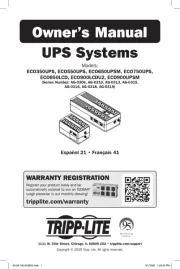
1 Augustus 2025
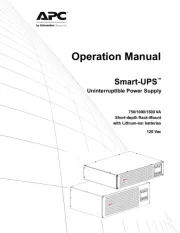
1 Augustus 2025
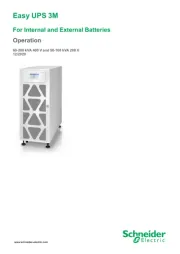
1 Augustus 2025
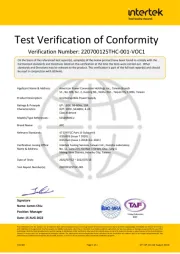
31 Juli 2025
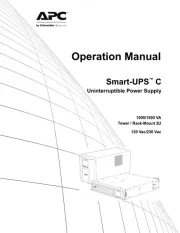
31 Juli 2025
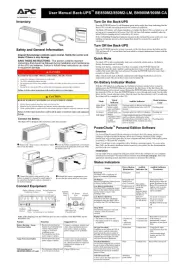
31 Juli 2025
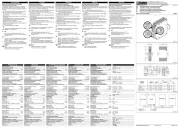
30 Juli 2025
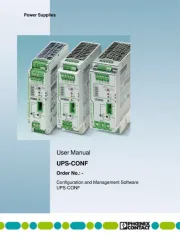
30 Juli 2025
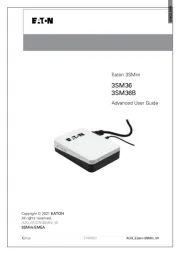
28 Juli 2025
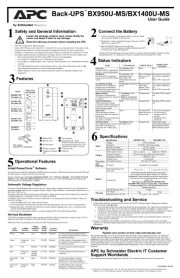
19 Juli 2025